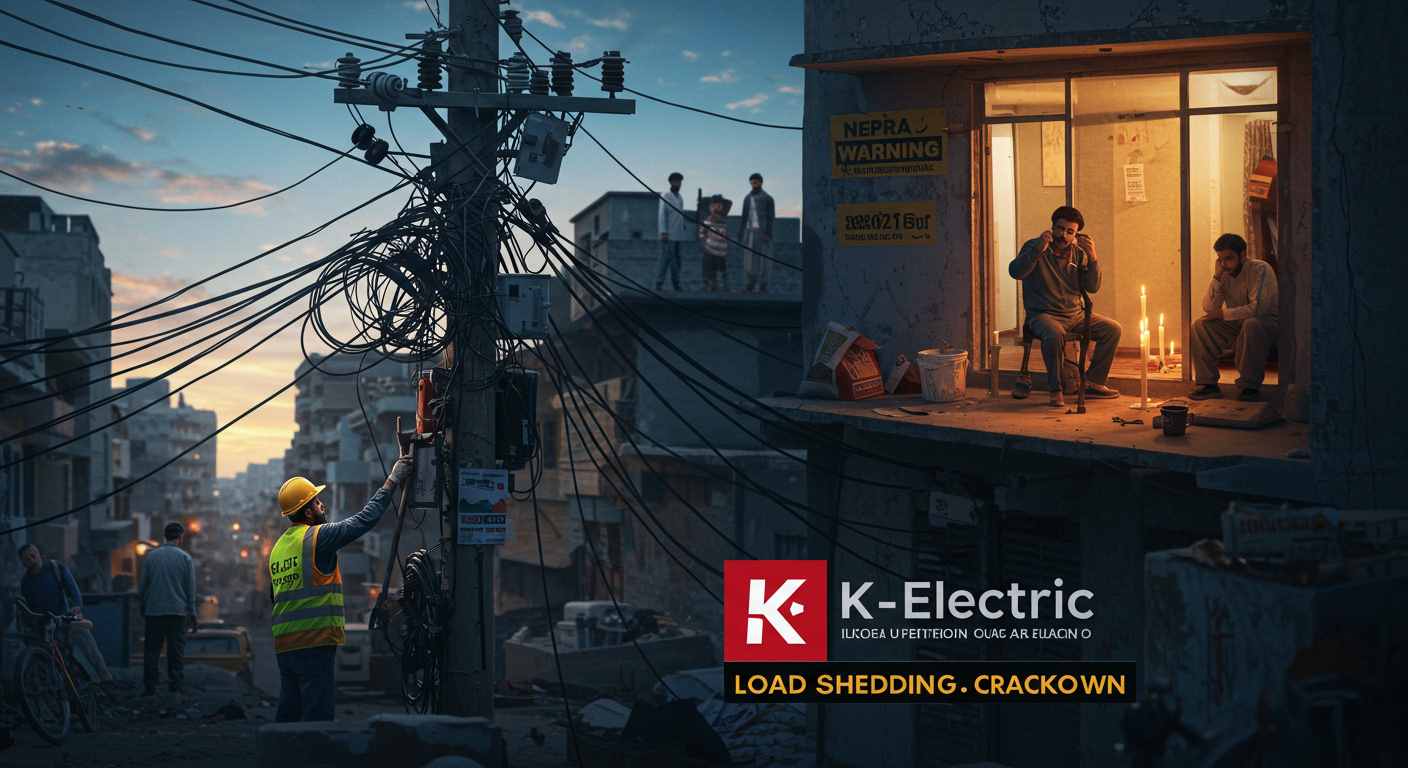K‑Electric Faces Regulatory Pressure, Theft Crackdown & Outage Relief Efforts in Karachi

K‑Electric (KE), the primary power utility for Karachi, has been under intense scrutiny in recent months. From extreme summer outages and regulatory reprimands to power theft crackdowns and high‑loss feeder proposals, KE finds itself at the center of Karachi’s energy crisis narrative. With over 20 million residents relying on it, KE’s actions now carry both operational and political weight.
Regulator Scolds for Excessive Load‑Shedding
In late May 2025, the National Electric Power Regulatory Authority (Nepra) reprimanded KE for subjecting large areas of Karachi to daily power outages exceeding 12 hours, sometimes interrupted only by 2.5–3 hour windows of electricity.
The regulator highlighted that such prolonged outages undermine both consumer faith in KE’s privatized mandate and Karachi’s economic stability under scorching summer heat.
Nepra further criticized KE’s dependency on NTDC power, despite its lower cost, which has not translated into reduced loadshedding for end consumers.
Illegal Connections Crackdown in Malir
In early 2025, KE escalated efforts against power theft, collaborating with law enforcement in Malir. Over 150 illegal connections—amounting to approximately 1,280 kg of unauthorized wiring—were dismantled. These “kundas” were estimated to steal 110,000 units of electricity monthly, prompting FIRs and removal actions.
KE stressed that eliminating such connections improves grid safety and guarantees fairer billing for legitimate customers.
High-Loss Feeder Strategy
CEO Moonis Alvi revealed that just 300 out of KE’s 2,129 feeders are responsible for a staggering 87% of energy losses—the root cause behind frequent outages.
He proposed that if the government takes control of these specific feeders and manages revenue collection, KE could dramatically reduce or eliminate loadshedding in the rest of the city.
According to Alvi, 70% of the city is already experiencing uninterrupted power.
He also stated that a Multi‑Year Tariff (MYT) structure would not increase residential bills and would attract foreign investment.
Consumers Still Bear Extra Rs 13.5 bn Burden
Despite promised tariff relief, KE consumers in Karachi are now being charged Rs 13.5 billion to cover various hidden costs, reducing the expected Rs 4.84/unit relief under the monthly Fuel Price Adjustment.
KE argues these costs—linked to plant start‑ups and efficiency losses—are legitimate but controversial.
Nepra has pushed back, questioning the justification behind transferring such burdens to consumers.
Load-Shedding and Consumer Outcry
Communities across Karachi have largely attributed prolonged outages to theft on their feeders, alleging that entire zones are penalized for a few illegal users . Baldia Town residents reported 12–16 hours of daily outages, calling the schedules unfair and arbitrary.
Many complain that even fully compliant neighborhoods are being punished due to systemic feeder-wide punishment.
Efforts to plan solar or generators are seen as coping mechanisms in a broken system .
Achievements: 70% Feeder Exemption
Despite criticism, KE maintains that about 70% of its feeders are now load-shedding free. This objective has been advanced through persistent illegal connection removals and consistent bill payments . In 2024, KE removed 220 tonnes of unauthorized wiring during 21,000 enforcement drives and set up facilitation camps for regularizing consumer accounts .
The Path Ahead: KE’s Vision to 2030
KE is betting on a Rs 484 billion T&D upgrade plan over seven years, targeting 95% load-shedding exemption by 2030 and reducing transmission losses to 12.8%.
Plans include widespread deployment of aerial bundled cables, advanced distribution management systems, and integrating captive power users to alleviate pressure on the grid
Successful implementation, Alvi suggests, could raise Karachi’s grid resilience and invite fresh foreign investment
Conclusion
K‑Electric currently finds itself at a tipping point. Between intense consumer backlash and regulatory chastisement, the utility is working to balance near-term enforcement strategies with long-term grid modernization goals. Critical questions remain: Will government intervention on high-loss feeders materialize? Will cost recovery stay fair and transparent? And can KE live up to its promise of 90–95% outage-free Karachi?.
As Karachi navigates this energy convergence, the coming year may define.


